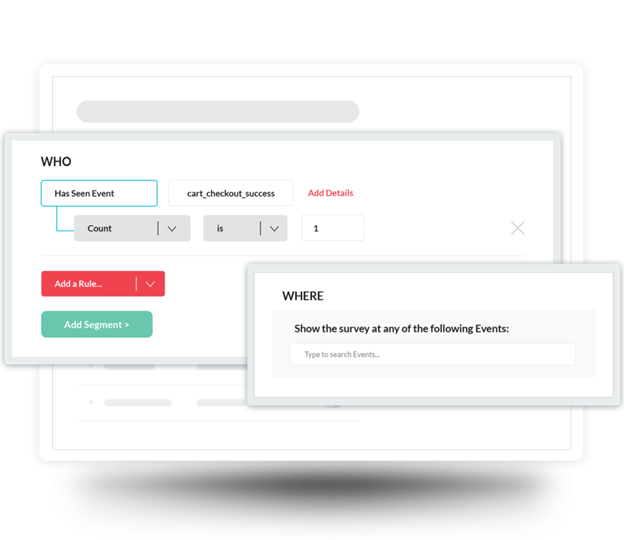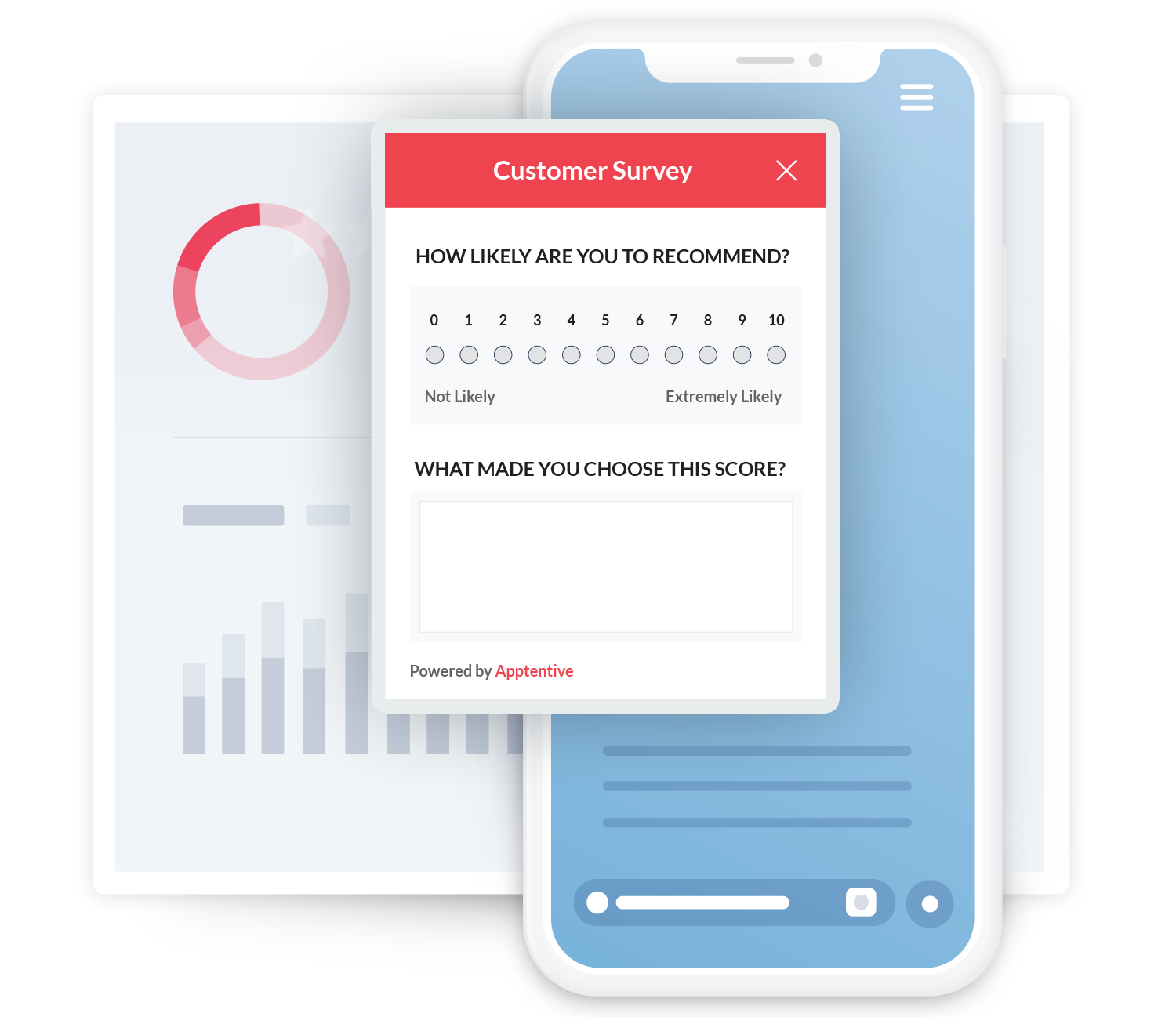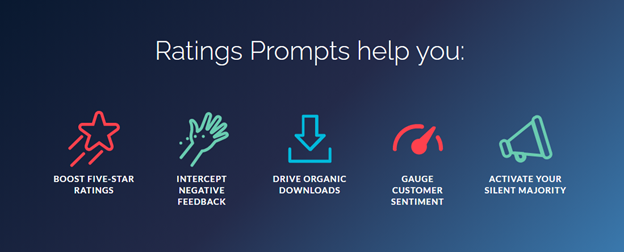We’ve all seen it: Disgruntled customers taking to the app stores to gripe about something that has literally nothing to do with the mobile app experience. Why is this?
Unfortunately, app store reviews are often the only easily-accessible place (aside from social media) for customers to air their grievances. What should be used as a showcase of glowing customer feedback that attracts new customers turns into a catch-all for any and all customer opinions that subsequently works against that goal.
This might be why when we talk about gathering more mobile customer feedback, a lot of product managers and mobile marketers visually recoil at first. The idea of opening that can of worms and making it easier for people to give feedback feels counterproductive at first. But what more advanced product experts understand is that when collected from the right people at the right time and in the right place, mobile customer feedback is invaluable (whether it’s negative, positive, or neutral).
So, how does one collect more high-quality, useful feedback?
Start by asking four questions:
- What do I want feedback on? Perhaps you’re looking for feedback on a specific product feature like login or the mobile order and pay experience.
- What kind of feedback do I want? For example, do you want strictly quantitative feedback like NPS? Or are you looking for more qualitative feedback where you’d benefit from an open-ended answer box?
- Who would give this feedback? Do you want to prompt people who are unhappy with their experience or only people who are happy loyalty program members?
- Where and when would I need to ask for this feedback? Do you want feedback right after someone completes a purchase? Or maybe a few days after they update their app? What about after they’ve been a loyalty member for two months?
Once you’ve identified the answers to these questions, you can build a mobile customer feedback strategy. As you’ll be able to see after going through this exercise, simply letting people leave any feedback they want on the app store isn’t useful or productive. You have to provide other channels that allow you to act on this feedback.
There are systems and tools you can set up quickly and easily to get the most out of customer feedback such as:
- In-app surveys
- NPS+
- Love Dialog
- Rating prompts
- Message centers
In-app surveys
Fun fact: The number of surveys sent in 2020 increased by 50% year-over-year (for more mobile engagement benchmarks like this, register for our upcoming webinar).
There’s a reason why surveys are so popular: Companies can collect and analyze both quantitative and qualitative feedback from customers. Mobile surveys can also be powerful in understanding customer sentiment. When it comes to mobile, short surveys with specific asks (like feedback on a new feature) are effective and efficient.
In addition to content, the timing of surveys is critical. A survey that interrupts a customer’s in-app experience usually does more harm than good. For example, you wouldn’t want to send a survey right when someone is about to check out because it might distract them from the ultimate goal of making a purchase.
NPS+
We know NPS will never go away. Too many companies rely on this metric, and we acknowledge that for many of you reading this right now, your performance is often measured on NPS. We absolutely think there’s value in having one metric that gives you a pulse on your entire customer experience. The problem is that the world is different today than it was when NPS began. Most companies are only hearing from less than one percent of their customer base, which can be dangerous.
Today, everyone has their mobile phone in their pocket at all times, and people are more accessible than ever. You have a unique opportunity to gather much more valuable and actionable customer feedback if you evolve NPS to NPS+.
NPS+ is the simple solution our team devised to meet our customers’ needs while still sticking to our beliefs about actionable customer feedback. The goal of a Net Promoter Score-type survey should be to determine the path necessary to change detractors, neutral customers, and even promoters to strong brand advocates. NPS+ does just that. By simply asking customers, “Why did you choose this score?” after the traditional rating question and allowing customers to provide unstructured feedback, we have helped companies to contextualize the NPS score and to understand where their customers think they’re doing well and where they need to improve — and made the survey valuable and relevant for the end customer.
The Alchemer Mobile (formerly Apptentive) Love Dialog™
The Alchemer Mobile (formerly Apptentive) Love Dialog™ is a unique way to gauge customer emotion in the moment. Our Ratings Prompts help you understand how customers feel about your app by asking a simple question: “Do you love our company?” The answer to this question can then help you understand where people fall in terms of sentiment. If customers don’t express satisfaction for your app and answer “No” to the Love Dialog, you have an opportunity to gain valuable feedback on the issues encountered, mitigate any problems, and turn the experience into something they DO love.
Ratings prompts
One of the few places customers give feedback is in the app stores in the form of ratings and reviews. If you have a low star rating in the app store, that’s indicative of one (or both) of the following: There’s an issue in the app that needs fixing and/or you’re not getting your biggest fans into the app store. In fact, most brands only hear feedback from about one percent of their customers.
In order to overcome this challenge, you should implement a tool that prompts the right people at the right time to leave a review at the app store. Not only will you be able to capture the feedback of more happy customers (and therefore improving your app store rating) but you’ll also be able to hear from more people who would have otherwise remained silent (we call this the silent majority).
By selecting the appropriate people to prompt, it ensures that happy customers rate your app publicly, while unhappy customers give you direct, actionable feedback.
Message center
When customers experience an issue, have feedback, or need a fast response, it is essential to have a channel through which they can easily contact you. A message center provides a two-way conversation channel to do just that.
As we mentioned in the section above, you can set up your mobile feedback system so that unhappy customers are directed to your message center rather than the app store. This also eliminates friction for the customer because if they need help at that moment, they don’t need to go searching for where to submit feedback, send an email, or take any extra steps to get help.
When you capture the right people at the right time and redirect them to the most efficient communication channel, you’re improving the mobile customer experience.
With the mobile customer feedback tools above in place, you could intercept that unhappy customer before they churned and left an unhelpful, negative app store review. Instead, you could direct them to a message center to connect directly with someone to solve their problem or a survey to better understand their concerns. Ultimately, these strategies help you save time and money collecting and analyzing feedback while also winning back unhappy customers.
Incorporating mobile feedback tools into your customer experience tech stack will drive more engagement, gather high-quality customer feedback, and help inform your product roadmap.
So now that you have all the tools in place to collect more mobile customer feedback more efficiently, now what? Lucky for you, we’ve created lots of educational content about how to analyze and act on the mobile feedback you’ve received.








